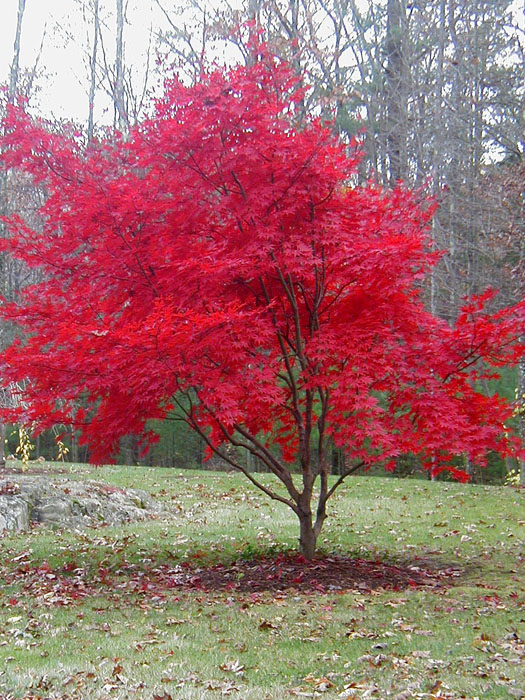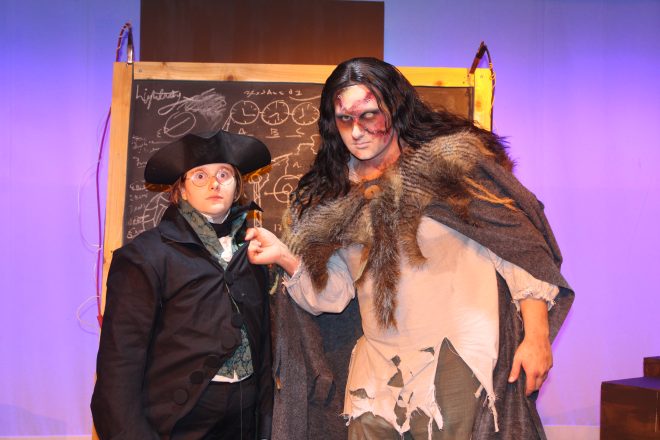Japanese red maples bring color to fall
Published 2:27 pm Saturday, August 27, 2016

- Japanese red maple tree
“August has passed, and yet summer continues by force to grow days. They sprout secretly between the chapters of the year, covertly included between its pages.” Jonathan Safran Foer.
August is all but in our rear view mirror. The summer came, shared and now is planning to depart. We are bit older and wiser, yet still enjoying every opportunity to get into the great outdoors. Let’s review another tree that catches much attention in the landscape.
Trending
The Japanese red maple is a showy and versatile species with landscape beauty and curb appeal exhibiting an authoritative display of seasonal and fall color, This species (Acer palmatum) of woody plants is native to Japan, North Korea, South Korea, China, eastern Mongolia and southeast Russia.
Many different cultivars have been selected throughout the years and are grown around the world for their attractive leaf shapes and colors.
They are in high demand and are quite expensive (especially if you factor in their smaller stature), and are used as a single specimen or in borders and groupings making them an excellent focal point in landscape design.
The Japanese maple is a deciduous shrub to small tree reaching a height of 15 to 30 feet with a single trunk for tree form or multiple trunks joining close to the ground as shrubs. Its growth habit is hemisphere-shaped (young age) and develops into a dome-like form upon maturity with a spread of about 20 feet. The leaves are 2 to 5 inches in length and width, and palmately lobed with five, seven or nine acutely-pointed lobes. The flowers are produced in small cymes with the individual flowers having five red or purple sepals and five whitish petals. The fruit is a pair of winged samaras, each measuring one-inch in length with a quarter-inch seed which requires stratification to germinate. In nature, the Japanese maple displays considerable genetic variation in offspring as seedlings from the same parent tree exhibit differences in leaf size, shape and color.
Three subspecies are recognized, including Acer palmatum subsp. palmatum (leaves are small, 2 to 3 inches wide with five or seven lobes and double-serrate margins, found at lower altitudes), Acer palmatum subsp. amoenum (leaves are larger, 2 ½ to 5 inches wide with seven or nine lobes and single-serrate margins, found at higher altitudes), and Acer palmatum subsp. matsumurae (leaves are larger, 2 ½ to 5 inches wide, with seven lobes and double-serrate margins, found at higher altitudes).
Many cultivars are currently available in the market and they are popular plants in garden centers and retail stores.
Trending
The red-leafed cultivars are the most popular among consumers with the cascading green shrubs displaying deeply dissected leaves also in demand. Preparations from the branches and leaves are used as medicinal treatments in the traditional Chinese culture.
Hundreds of named cultivars of Acer palmatum have been released throughout the world presenting numerous colors, forms, leaf types, sizes and optimum growing conditions. Some cultivars tolerate sun and others prefer shade and almost all of them are adaptable to and blend in with companion plants. The tree forms are particularly ideal for borders and ornamental paths because their root systems are compact and non-invasive. Favorable conditions include well-drained soils and following recommended cultural practices (do not over-fertilize, over-water, or incorrectly prune). Also, several varieties can be successfully grown in containers as specimen plants.
Popular cultivars (some with the AGM label indicating the Royal Horticultural Society’s Award of Garden Merit) include Aka shigitatsu sawa (pinkish-white leaves with green veins), Ao ba jo (a dwarf with bronze-green summer foliage), Atropurpureum (wine-red, including new branches), Bloodgood (an improved cultivar of Atropurpureum, AGM), Burgundy lace (AGM), Butterfly (small leaves with white borders), and Chitose-Yama (AGM).
Also, Dissectum (lace-like leaves and drooping habit, AGM), Dissectum atropurpureum (AGM), Dissectum atropurpureum “Garnet” (AGM), Dissectum atropurpureum “Inaba-Shidare” (AGM), Dissectum “Crimson Queen” (AGM), Dissectum “Seiryu” (a green, tree-like shrub with finely dissected leaves, AGM), Emperor 1, Golden Pond (greenish-yellow summer foliage), Goshiki koto hime (a delicate, variegated dwarf), Higasa yama (crinkled leaves variegated with yellow), and Beni Schichihenge (blue-green leaves variegated in shades of pink and cream and shades of orange and gold in fall).
Also, Hogyuko (rich green leaves, turning orange in the fall), Hupp’s Dwarf (a small, dense shrub with miniature leaves), Issai nishiki kawazu (very rough, rigid bark), Kagiri nishiki (similar to Butterfly but with more pinkish tones), Karasu gawa (slow-growing, variegated with brilliant pink and white), Katsura (yellow-green leaves tipped with orange, AGM), Koto no ito (light green, thread-like leaves), Little Princess (a sparsely branched dwarf with irregular habit), and Mama (shrubby dwarf with variable foliage).
Also, Masu murasaki (a compact, shrubby tree with purple leaves), Mizu kuguri (orange-tinted new growth and very wide growth habit), Nigrum (deep purple leaves turning to crimson, AGM), Nishiki gawa (pinetree-like bark, great for bonsai), Nomura nishiki (dark purple, lace-like leaves), Ojishi (tiny dwarf, very slow growing), Osakazuki (tree-like shrub with spectacular fall color, AGM), Peaches and Cream (pinkish-white leaves with green veins), and Pink Filigree (finely dissected, brownish-pink leaves).
Also, Red Filigree Lace (delicate, finely dissected, dark purple), Red Pygmy (AGM), Sango kaku (coral-bark maple with pinkish-red bark, AGM), Shaina (dwarf from Bloodgood), Shindeshojo (AGM), Shikage ori nishiki (vase-shaped shrub with dull purple foliage), Shishigashira (AGM), and Villa Taranto (deeply cut, spidery leaves that emerge pink in spring, fade to bright green in summer, then turn to golden yellow in the fall).
And, Skeeter’s Broom (from a Bloodgood witch’s broom), Tamukeyama (finely dissected, dark purple, cascading habit), Trompenburg (slender, upright grower, purple leaves, AGM), Tsuma gaki (yellow leaves with reddish-purple borders), and Yuba e (upright tree with scarlet variegation). Red-foliaged plants are sold under names such as Atropurpureum and Bloodgood.
In addition, a number of cultivar groups have been naturally selected such that these seedlings often resemble their parent. Many of these are sold under the same name as the parental cultivar (often propagated by grafting) to the extent that there is much uncertainty in distinguishing them. For example, many dark-red Japanese maples are sold as Atropurpureum and Bloodgood and many different cultivars with delicate lace-like foliage are sold as Dissectum, Filigree and Laceleaf.
Properly research the Japanese maples and determine what characteristics and features are desirable to you.
Then select the proper placement for them in your landscape through the application of appropriate landscape design principles.
Also, proper installation and maintenance are essentials since your investment is so significant. The Japanese maples are truly an asset to the aesthetics and curb appeal of the site (a true form of beauty and pleasure).
Always think in terms of native and sustainable plants in the landscape. Keep your hanging baskets and potted plants refreshed with water and food. Remember to feed and water the songbirds.
Give your pets the care they need. Do not leave them unattended in a hot car or tied to a tree all day long. Also, be on lookout for children playing and bicyclists riding along the streets and roadways throughout our communities.
Don’t drive distracted or impaired, and don’t text while driving. Help the homeless and those in need every chance you get. Let’s keep everyone blessed and safe!
“Come, let us bow down in worship, let us kneel before the Lord our Maker; for he is our God and we are the people of his pasture, the flock under his care.” Psalm 95:6-7.
Seagle is a Sustainability Associate, Golf Environment Organization (Scotland), Agronomist and Horticulturalist, CSI: Seagle (Consulting Services International), Professor Emeritus and Honorary Alumnus, Abraham Baldwin Agricultural College, Associate Editor of The Golf Course, International Journal of Golf Science, and Short Term Missionary, Heritage Church, Moultrie. Direct inquiries to eddie@csiseagle.com.





